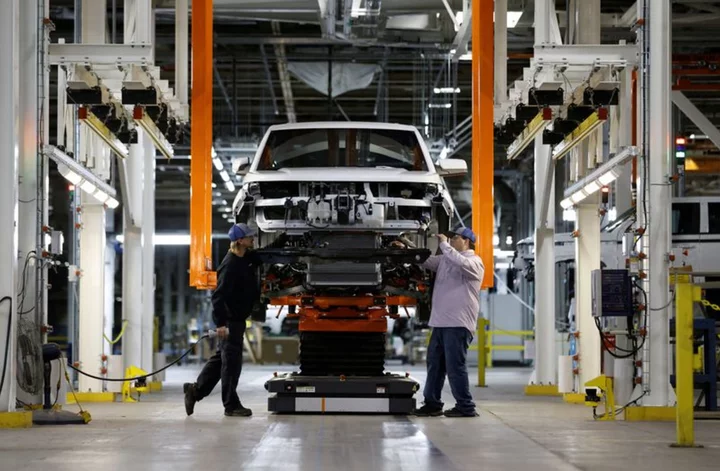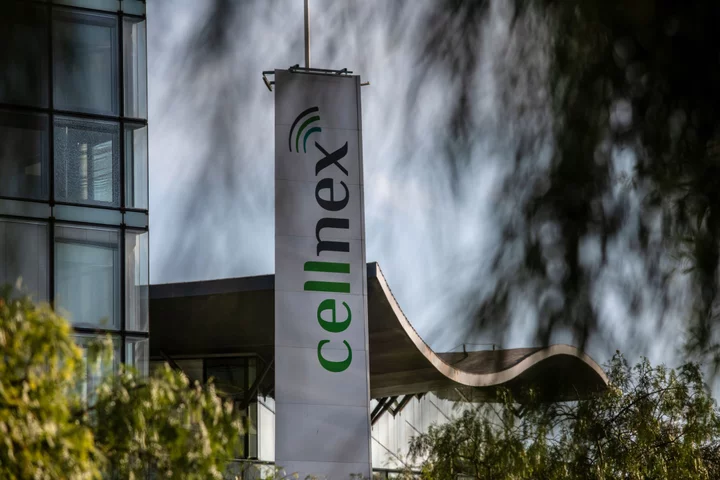By Joseph White and Ben Klayman
DETROIT The U.S. electric vehicle market is growing, but not fast enough during the latest quarter to prevent unsold EVs from stacking up at some automakers' dealerships or to allow Tesla to avoid new price cuts, according to analysts and industry data.
Rising inventories and price-cutting could represent only a short-term pause in EV market growth. But they could be signals that boosting U.S. EV sales above the current 7% market share level will be more costly and difficult than expected, even with federal and state subsidies.
Automakers North America have billions of dollars in EV-related investments riding on how the next several quarters play out. If production of EVs continues to outpace demand, automakers will have to choose between slashing prices and profit margins, or slowing assembly lines.
More than 90 new EV models are expected to hit the U.S. market through 2026, according to AutoForecast Solutions. Many will struggle to reach profitable sales volumes, analysts said.
Dealers for established automakers such as General Motors, Ford, Hyundai and Toyota have more than 90 days' worth of unsold EVs at their stores at current sales rates, according to a report from Cox Automotive.
U.S. dealers have more than 92,000 EVs in stock, more than three times the number on their lots a year ago, according to Cox data. Overall, new vehicle inventories are up 74% from a year ago, Cox said.
There is a wide range in the availability of EV models. GM had 50 days' worth of Cadillac Lyriqs available as of June 30, below the industry average of 52 days' supply at current sales rates, Cox said.
GM said in a statement that it has "very low inventory - and high demand" for its EVs. More than 80% of Lyriqs and GMC Hummer EVs built are still in transit to dealers, the automaker said.
GM's bigger challenge has been accelerating production and delivery of its next-generation EVs built on GM's Ultium architecture. Of 36,024 EVs GM delivered in the United States during the first half of this year, only 2,365 were Ultium EVs. GM has a goal of building a total of 100,000 electric vehicles in North America during the second half of this year.
Ford had 86 days worth of F-150 Lightnings and 113 days' worth of Mustang Mach-E electric SUVs on hand, Cox said. A Ford spokesman said Cox's figures overstate the inventory available at dealerships.
Ford built 46,238 Mach-Es during the first half of this year, and sold 14,040 of the electric SUVs, according to data posted on its investor site. Ford cut prices for Mach-E models in May.
Volkswagen dealers had 131 days' worth of ID.4 electric SUVs in inventory, according to Cox data.
In a statement, Volkswagen's U.S. sales arm said "we have seen some softening in EV sales in the U.S. recently" as supply chain bottlenecks have eased, allowing for increased production.
VW sees strong demand for the ID.4, but does not have enough all-wheel-drive versions of the SUV, "which is what the market wants," the company said. VW also cited "the effects of some customer confusion and, therefore, hesitation to buy vehicles over the tax credit eligibility of EV models."
The U.S.-built ID.4 qualifies for a $7,500 consumer tax credit.
YOUNG MARKET
Industry officials and analysts cautioned that the U.S. EV market is still in a formative phase, with many consumers still evaluating whether EVs fit their needs and major automakers still ramping up production.
"There's a natural speed of market growth here that many are fighting against, and there's a lot of confusion in the market with too many brands," said Vitaly Golomb, an investment banker who focuses on electric vehicles. "The strong will survive here and the rest will struggle."
Tesla is using its lead in EV production costs to accelerate demand with price cuts. Legacy automakers are losing money on most of their electric models.
Tesla, Rivian and other new EV companies do not have dealers or report inventory. Tesla last week reported better-than-expected global deliveries. But the Texas-based EV company has been offering a variety of discounts and incentive offers to spur demand, such as discounts tied to customer referrals launched late last week.
Tesla's price cuts, and competitors' responses, pushed average selling prices for EVs for the second quarter to $53,438, Cox said. That is down 19.5% from the peak of $66,390 in June 2022.
Automakers face tough competitive choices, as well as regulatory pressure from Washington, as they try to accelerate EV sales to levels that will support new North American EV production capacity, such as Ford's sprawling Blue Oval City complex in Tennessee.
The Biden administration has proposed emissions rules that effectively require U.S. automakers to shift their sales to two-thirds EVs by 2032 - a proposal GM and the association representing most automakers in the United States have said is unrealistic.
"Price cuts do show that we're in sort of an equilibrium of demand and supply and price so when sales aren't there, they're going to be dropping price," said Mark Wakefield, co-head of consultancy AlixPartners' automotive practice. "Tesla in particular has the room to do that."
Wakefield said it is too soon to declare that U.S. EV demand has hit a plateau. "We see it as choppy growth, but continued growth," he said.
(Reporting By Joe White, Editing by Nick Zieminski)









